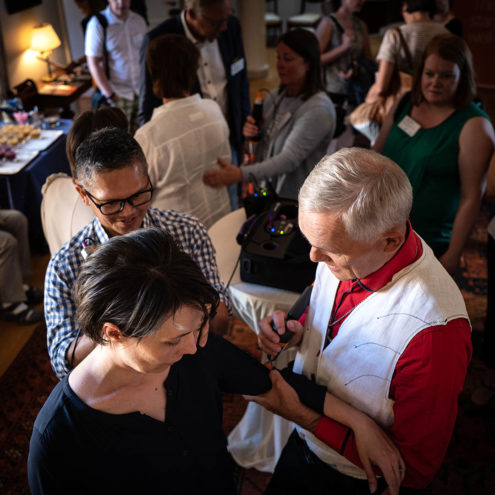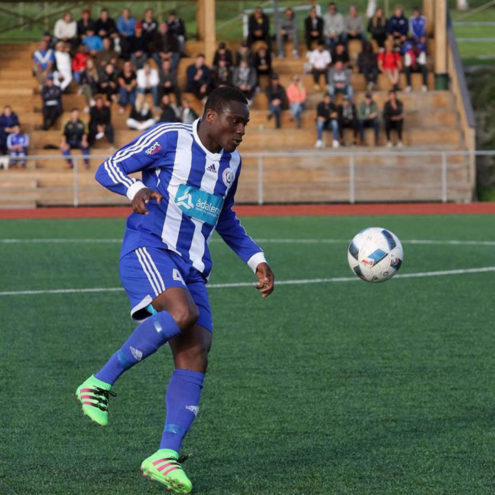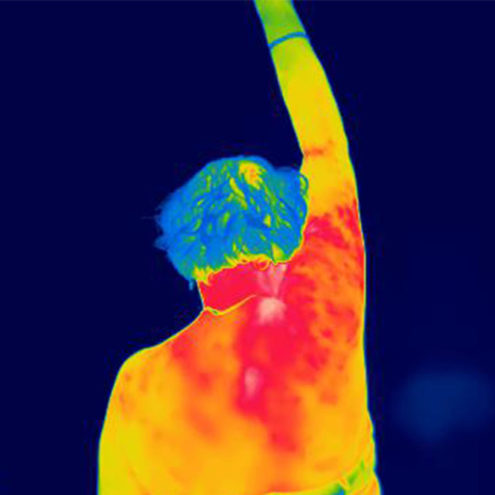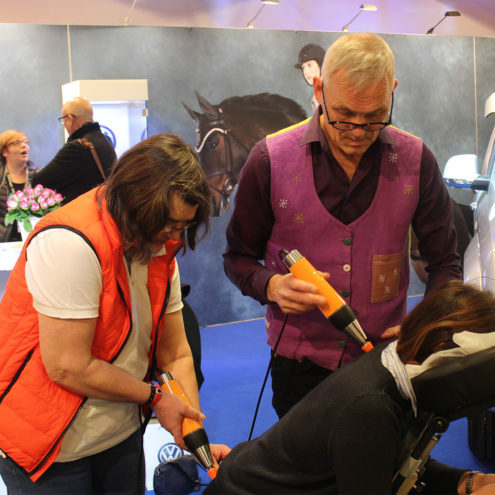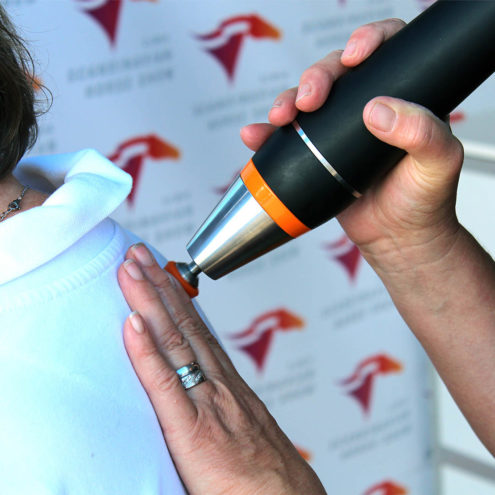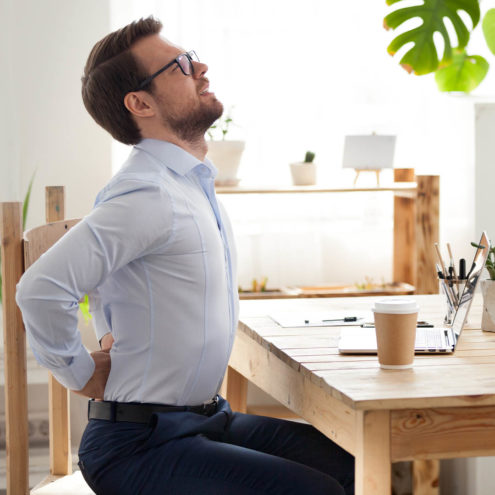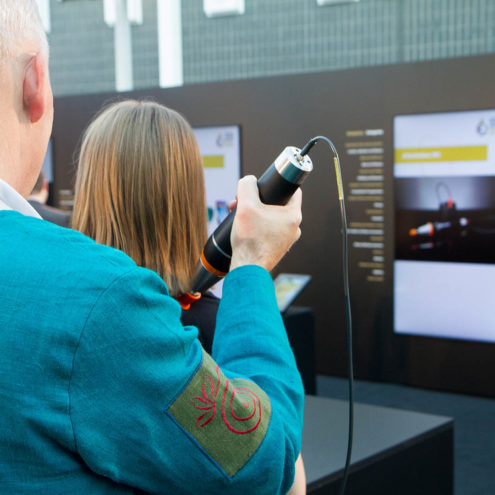Knee Pain When Climbing Stairs: Causes and Relief

Why do I experience knee pain when climbing stairs?
Experiencing pain in the knee Stair climbing is a common problem and can have many causes. Understanding these causes can help to find the right treatment and relief.
Stress on the knee joint when climbing stairs
Walking on stairs is subject to significantly more stress than on flat ground. This is due to:
Increased force: With each step up the stairs, the knee joint has to lift the entire body weight against gravity, increasing the pressure on the knee joint.
Deeper bending: climbing stairs requires deeper bending of the knee joint, which can increase stress on joint structures such as cartilage, tendons and ligaments.
Repetitive strain: Frequent stair climbing can lead to overuse and microtrauma of the knee joint, especially if you have weak or unbalanced muscles.
Underlying knee problems and injuries
Several knee problems and injuries can contribute to pain when climbing stairs:
Patellofemoral Pain Syndrome (PFSS): A common cause of knee pain that occurs when the cartilage under the kneecap (patella) becomes irritated. This syndrome is often called ‘runner’s knee’ and is made worse by activities that involve bending the knee, such as climbing stairs.
Osteoarthritis: Wear and tear of the cartilage of the knee joint can lead to pain and stiffness, especially during strenuous activities such as climbing stairs.
Meniscus injuries: Damage to the meniscus, the cartilage-like structure that acts as a shock absorber in the knee joint, can cause pain, especially with twisting movements and deep knee bending.
Ligament injuries: Damage to the ligaments of the knee, such as the anterior cruciate ligament (ACL) or the medial collateral ligament (MCL), can lead to instability and pain under load.
Muscle imbalance and improper biomechanics
Muscle imbalances and incorrect biomechanics can also contribute to knee pain when climbing stairs:
Quadriceps and hamstring weakness: Weak muscles around the knee can lead to increased strain on the structures of the joint, which can cause pain.
Incorrect foot position: If the foot is not positioned correctly when climbing stairs, it can affect the movement of the knee joint and increase the risk of pain.
Poor posture: Incorrect posture and walking technique can lead to unnecessary strain on the knee joint.
Symptoms of knee pain when climbing stairs
The symptoms of knee pain when climbing stairs can vary depending on the underlying cause, but common symptoms include:
Pain and discomfort at the knee joint
Local pain: The pain is often localized to the front, side or back of the knee. It may feel like a sharp, burning pain or ache.
Radiating pain: In some cases, the pain may radiate down the lower leg or up the thigh.
Difficulty bending or extending the knee joint
Limited mobility: Pain can limit the ability to fully bend or extend the knee joint, making it difficult to go up or down stairs.
Stiffness: The knee may feel stiff, especially after periods of inactivity.
Weakness or instability of the knee
Instability: The knee joint may feel unstable and prone to giving way, especially under load.
Weakness: Reduced strength in the knee joint and surrounding muscles can make it difficult to support body weight when climbing stairs.
Treatment
Treating knee pain when climbing stairs requires a comprehensive and individualized approach that takes into account both the symptoms and the underlying causes. Here are some ways:
Diagnostics
A thorough diagnostic evaluation is essential to identify the causes of your knee pain. This may include:
Medical history: a detailed review of your symptoms, past injuries and activities that may contribute to the pain.
Physical examination: assessment of knee range of motion, strength, stability and possible tenderness on palpation.
Imaging: X-ray, MRI or ultrasound can be used to get a detailed picture of the structures of the knee and identify injuries or degenerative changes.
Treatment options
Depending on the diagnosis, different treatment methods can be used to relieve pain and improve knee joint function:
Physiotherapy: specific exercises and techniques to strengthen the muscles around the knee, improve mobility and correct biomechanical imbalances.
Medication: Painkillers and anti-inflammatory drugs can help reduce pain and inflammation.
Injections: Cortisone injections can be used to reduce inflammation and pain in the knee joint.
Orthopaedic devices: The use of orthoses, shoe inserts or knee braces can help relieve the knee joint and improve stability.
Surgery: In severe cases where conservative treatments do not provide relief, surgical procedures, such as arthroscopy or meniscus repair, may be necessary.
Self-care and home treatment
In addition to professional treatment, there are several self-care measures that can help relieve symptoms and promote healing:
Rest: Avoid activities that aggravate the pain and give your knee time to recover.
Cold: Apply ice to the affected area for 15-20 minutes several times a day to reduce swelling and pain.
Stretching: Regular stretching exercises to improve flexibility and reduce muscle tension around the knee.
Strength training: Strengthen the muscles around the knee to improve support and stability.
Weight control: If obesity is a factor, weight loss can help reduce the strain on the knee.
How can we help you with knee pain on stairs?
Understanding the causes and symptoms is the first step towards finding effective relief for the knee joint. At the FasciaClinics, we take a holistic approach to knee joint treatment. Our team of therapists use fascia therapy to relieve tension and pain. The fascia is the network of connective tissue that binds and permeates everything in our body. All cells, tissues (even bone tissue), muscles and organs contain fascia.
Fascia treatment focuses on releasing tension and adhesions in the fascia and increasing its flow. Reduced pressure and increased circulation allow cell membranes to more easily absorb nutrients and release waste products. Fascia treatment can thus promote the body’s own healing. The treatment provides a pleasant relaxation and does not hurt. It gets the whole body flowing and helps you balance your posture so that the body is evenly loaded.
During a visit, we analyze the whole body to see where compensations and imbalances are and how they have spread. If there is an imbalance in the body, there is a risk that it will spread and affect other structures such as muscles and joints. That’s why it’s very important to seek help quickly as soon as you notice any symptoms.
Fascia treatment for knee joint problems involves balancing the body to make the load on the legs more even. A more even load will reduce the wear and tear on the muscles and other structures of the legs, thereby reducing the risk of injury.
Preventive measures
To prevent future knee pain when climbing stairs, the following preventive measures can be effective:
Ergonomics: Adjust the workstation and use ergonomic aids to reduce knee strain.
Warm-up: Do warm-up exercises before activities involving the knee to prepare the muscles and joints.
Regular exercise: Exercise regularly to strengthen leg muscles and improve mobility.
Correct technique: Learn the correct technique for climbing stairs and lifting objects to avoid unnecessary strain on the knee joint.
By combining medical treatment with self-care measures and prevention strategies, we can help you relieve knee pain when climbing stairs and improve your quality of life. Contact us to discuss your symptoms and develop a treatment plan that fits your needs.
 Search
Search



